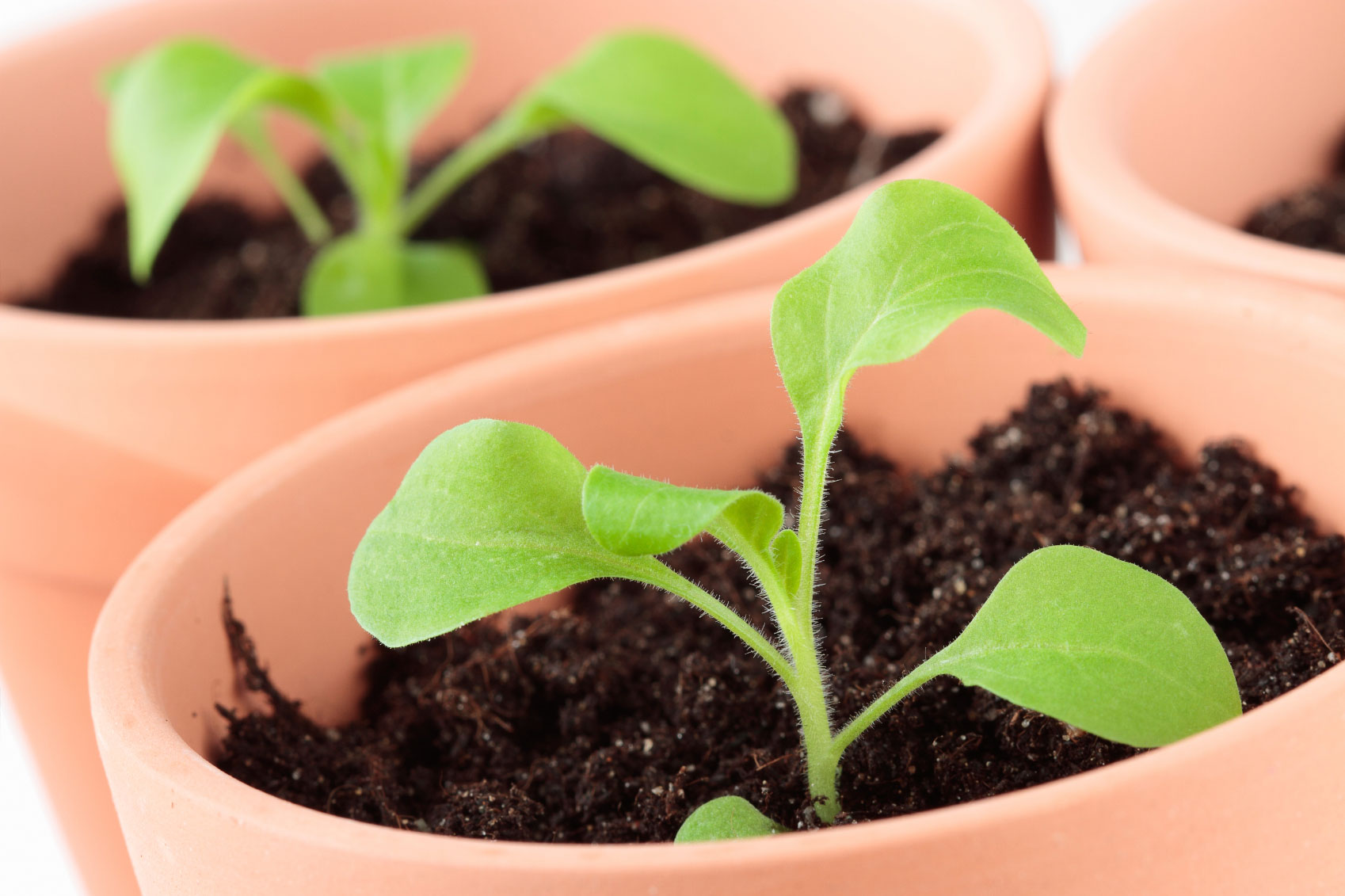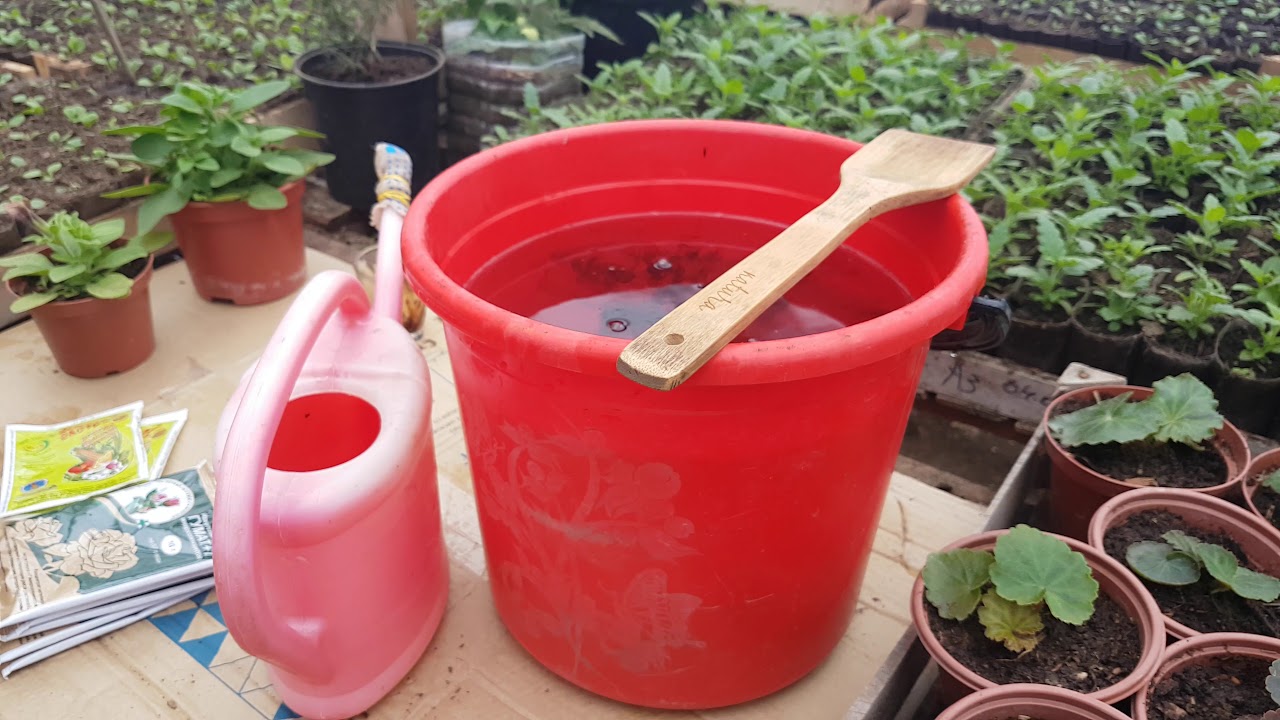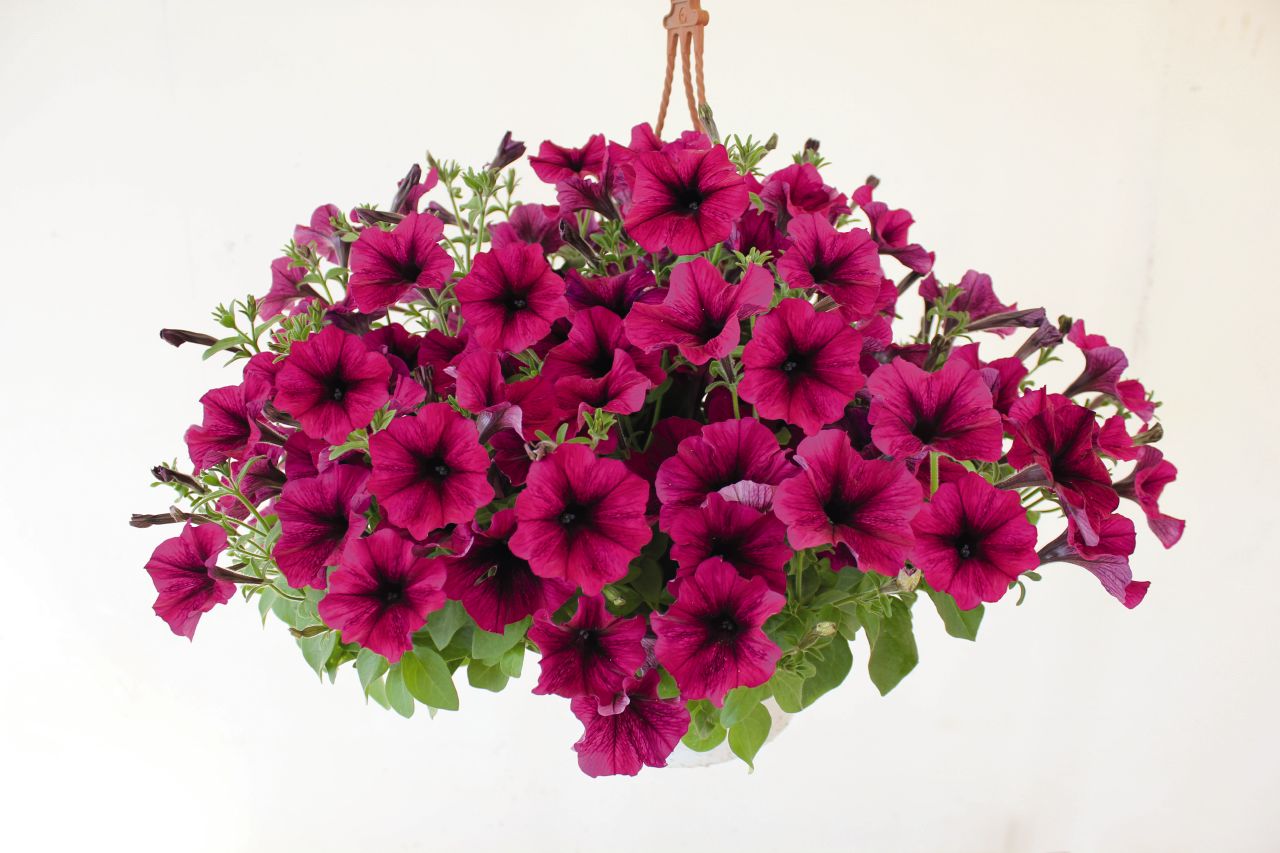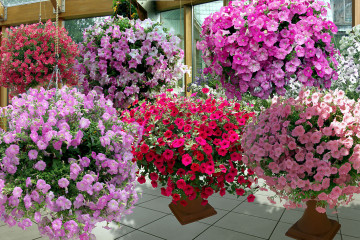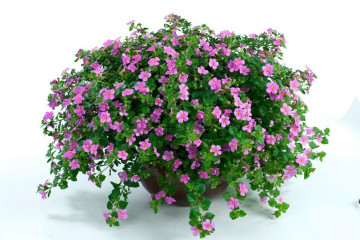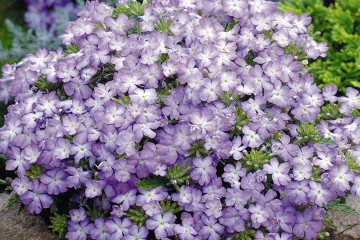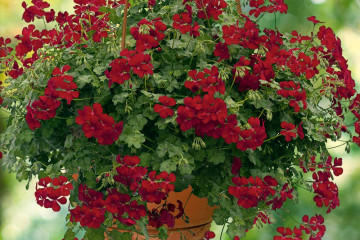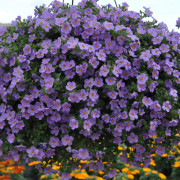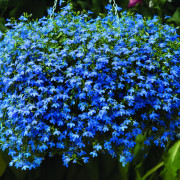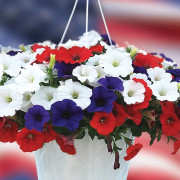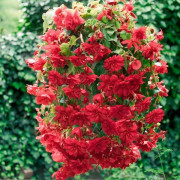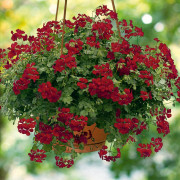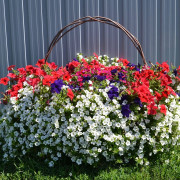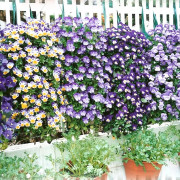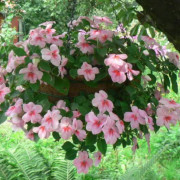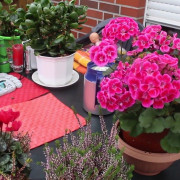Ampel petunia - growing in pots and care
Content:
The exuberant bloom of petunia will not leave indifferent any flower lover. You can meet fragrant bushes of a plant in almost every area. The main advantages of the herbaceous perennial are long flowering and unpretentiousness. Petunias do not cause any inconvenience, they will become a real decoration of any flower bed.
Features of growing and caring for ampel petunias
To grow ampelous petunias from seeds, it is important to choose high-quality planting material supplied by a foreign manufacturer. It is better to sow seeds in the spring. Until the flowering of small-flowered varieties, 10 weeks should pass. Large-flowered flowers begin to bloom 12 weeks after planting.
The soil for planting should be loose, nutritious and thoroughly moisturized. Before sowing, the seed is soaked for 30-40 minutes. in a solution of potassium permanganate.
Step by step process:
- Make holes on the bottom surface of the planting container through which excess water can escape.
- A small part of pebbles or expanded clay is laid out at the bottom of the container. The layer thickness should not exceed 2 cm.
- Seeds are scattered over the poured soil. The container is covered with polyethylene material.
- There is no need to sprinkle the seeds with a layer of soil. The pot is placed on a windowsill, well lit by the sun's rays. Ultraviolet light helps to activate and stimulate plant growth. For the seed to germinate, it is important to maintain a room temperature of 23-25 ° C.
- Every day, the polyethylene is removed from the pot for a few minutes in order to ventilate.
- After 6-7 days, the first shoots appear, which need daily spraying. After seed germination, the room temperature drops by a couple of degrees.
- After the appearance of the first foliage, the seedlings are seated in separate containers. You can start picking at the moment the fifth leaf appears.
- After pinching, petunia can be planted in open ground.
- It is very important to moisten the soil in a timely manner when growing seedlings. Bushes die from excessive dryness of the soil, and excessive moisture leads to infection with a fungal infection. Ideal watering for petunias is moderate and systematic.
In the first weeks, the seedlings of herbaceous perennials develop extremely slowly. However, do not worry, during this period the plant is focused on building up the root system. The growth of petunias after 14 days will become more active. Every four weeks, it is necessary to apply a special complex fertilizer to the soil to help the flowers take root in the garden plot.
Ampel petunia, the cultivation of which does not cause inconvenience, will become a real decoration of the site.
Petunias: care and cultivation in pots
Before you start planting a perennial, it is important to familiarize yourself with the peculiarities of growing and caring for ampelous petunia. When choosing pots, it is important to take into account the type of plant that is to be planted at home. For planting ampel petunias, five-liter containers are best suited. For terry perennials, a pots are enough, the volume of which is 3 liters. You can put a couple of ampelous petunia bushes in it so that the decorative vase takes on a chic appearance.In a container measuring 40X18X15 cm, you can simultaneously plant three ampel petunia bushes.
It is very important to consider the need for waste water. It is advisable to lay a small layer of foam rubber on the bottom surface of the planter, which will absorb excess moisture.
In order to prevent the soil from drying out in the pots, experts recommend using a hydrogel or vermiculite. The hydrogel must first be soaked in water. Instead of water for the hydrogel, you can use a fertilizer solution for flowers. Vermiculite is mixed with the soil during the preparation of the soil mixture. It is advisable to add a small percentage of slowly dissolving complex fertilizer to the soil mixture.
Planter in blue and white shade
A pair of petunias with flowers painted in a blue tint are planted in a flowerpot. Alyssum is sown between two bushes and covered with a transparent film. After a few days, the seeds will begin to germinate. The film material can be removed.
During flowering, an amazing composition of a fragrant cloud of white shade with blue petunia flowers at the edges is obtained. In the case of planting flower seedlings in late spring, the pots can be taken outside. However, for the first week, it is better to hold the flowers in a shaded area. This will speed up the process of adaptation to new conditions and give them the opportunity to get stronger.
Formation of ampelous petunia
The genetics of ampelous petunias are designed for the formation of lush, branched bushes. Adult perennials do not need shaping. However, they need to remove the blooming buds and seed pod. Compliance with this condition makes it possible for the petunia to redirect its forces to the formation of other buds that can bloom magnificently and delight the owner.
To promote the active growth of lateral shoots and the correct formation of ampelous petunias, pinching of the main shoot should not be ignored. How to do it:
- The process of seedling formation begins early enough. Pinching is carried out at the moment when the fifth leaf appears on the bushes.
- The upper part of the stem of the seedling is removed, which promotes the growth of dormant lateral buds on the stem.
- Thanks to the pinching, new stems begin to form on the bush, growing to the sides and up.
- In some cases, the procedure can be carried out several times, which allows you to achieve the maximum density of the bushes. Re-pinching is carried out with an interval of 30 days. For the convenience of removing the stems, you can use a sharp stationery knife or scissors. A pruner is used to trim an adult petunia.
- After the procedure for forming an ampelous bush, the green mass begins to grow vigorously. During pinching, experienced florists recommend applying top dressing.
- For each approach, pinching can remove only a third of the herbaceous perennial. Removing a large part of the herb at a time can kill the bush.
Ampel petunia care for abundant flowering
Proper care of petunia allows you to achieve lush and long-lasting flowering of the plant. Below are the main features of plant care, allowing you to grow a healthy bush and achieve abundant flowering, disease resistance. Petunia ampelous, the care of which is quite simple, will become a real decoration of the flower bed.
Top dressing
Top dressing of herbaceous perennials should be regular. The first fertilization is applied on the 14th day after planting the seeds. Re-introduction should be carried out after 10 days.
It is important to provide the plant with iron nutrition. With a deficiency of this useful substance, petunias begin to suffer from chlorosis, the symptomatology of which is yellowed foliage. To prevent such diseases, it is worth using ferovit. With the help of a liquid preparation, prophylactic or therapeutic treatment of the bushes is carried out for a week.
Humic and organic fertilizing, mullein infusion are endowed with high efficiency. An adult bush can be fed once a week. In this case, the root type of the procedure and the foliar should alternate. In order to achieve abundant flowering of a room culture, which the florist grows in flowerpots, it is necessary to introduce a significant amount of nutrients that are in the composition of any complex fertilizer.
It is important to treat the seed material with succinic acid when planting, which helps to regulate the microflora of the soil and the active growth of petunia. The succinic acid with which the seeds were treated allows the herbaceous perennial to cope with any disease and to endure dry periods. Even an overdose of such fertilizer will not harm.
To prevent the development of blackleg disease, it is worth adding a small amount of peat to the soil mixture. Compliance with this recommendation will avoid stagnant moisture.
Watering
Prolonged drought often leads to the death of ampel petunia bushes. The foliage of the plant begins to sag, the flowers resemble the appearance of a wet cloth. If the soil has been kept dry for a short time, then the perennial can be saved. This will take several days to pour abundantly the bushes with water. Regular drying out of the soil leads to:
- drying of green mass;
- yellowing of foliage;
- wilting flowers;
- decreased immunity;
- loss of visual appeal.
In the spring, it is enough to water the flowers once a day. In the summer, the frequency of watering the plant increases up to 2 times a day. It is advisable to moisten the soil in the morning and evening hours. In cases where it is not possible to provide sufficient watering, experienced flower growers recommend adding a small part of the hydrogel to the soil mixture. Also for this purpose, you can use a ceramic funnel cone, which allows you to sufficiently moisten the soil.
Watering ampel petunia should be abundant. In this case, water must be removed from the drainage hole. This is the only way to be sure of sufficient moisture in the earthen coma in the pot.
Moistening open ground with planted petunia at the end of spring, it is worth remembering that at night the air temperature is low enough for a perennial. Therefore, watering after 18:00 is unacceptable. Compliance with this recommendation will prevent hypothermia of the root system. This does not apply to plants grown on a glazed balcony.
In the dry summer months, experienced flower growers recommend additionally spraying the plants with warm water from a spray bottle. This recommendation is an excellent prevention against the invasion of spider mites and a good option for moisturizing perennials. To heal and strengthen the plant, you will need to spray the bushes every evening. It is very important to moisturize after sunset. Otherwise, the sun's rays will pass through the droplets of water that hit the foliage and cause the leaf plate to burn.
Diseases and pests
Ampel petunia does not belong to the category of capricious plants, but some pests can still spoil it.
The most common cause of damage to the bushes is powdery mildew. From the bottom of the green mass, a white tint with a mushroom aroma is formed. The foliage turns yellow and loses its turgor; it hangs with a lifeless rag on the bush. To cope with an unpleasant ailment, you should use an antifungal agent of the type:
- foundation;
- emerald;
- topaz.
Florists often complain about the abundant accumulation of midges near perennial bushes. To cope with the invasion of the whitefly, which can eat the plant, you should use insecticides of the type:
- actars;
- actellika;
- phytoverma.
The same drugs can be used to deal with spider mites, the most common pest affecting ampel petunia. Arachnids, located on the lower part of the green mass, suck out juices and provoke the death of a perennial.
Ampel petunia is a unique herbaceous perennial, for the cultivation of which it is important to first familiarize yourself with the features of care. Lack of proper knowledge does not allow a novice florist to achieve abundant flowering of the plant. Lovers of ampel petunias, endowed with experience, can grow a plant in any latitude and enjoy the abundance of flowers on the bushes and the fragrance of a perennial. With proper care, you can grow an amazingly beautiful plant.

